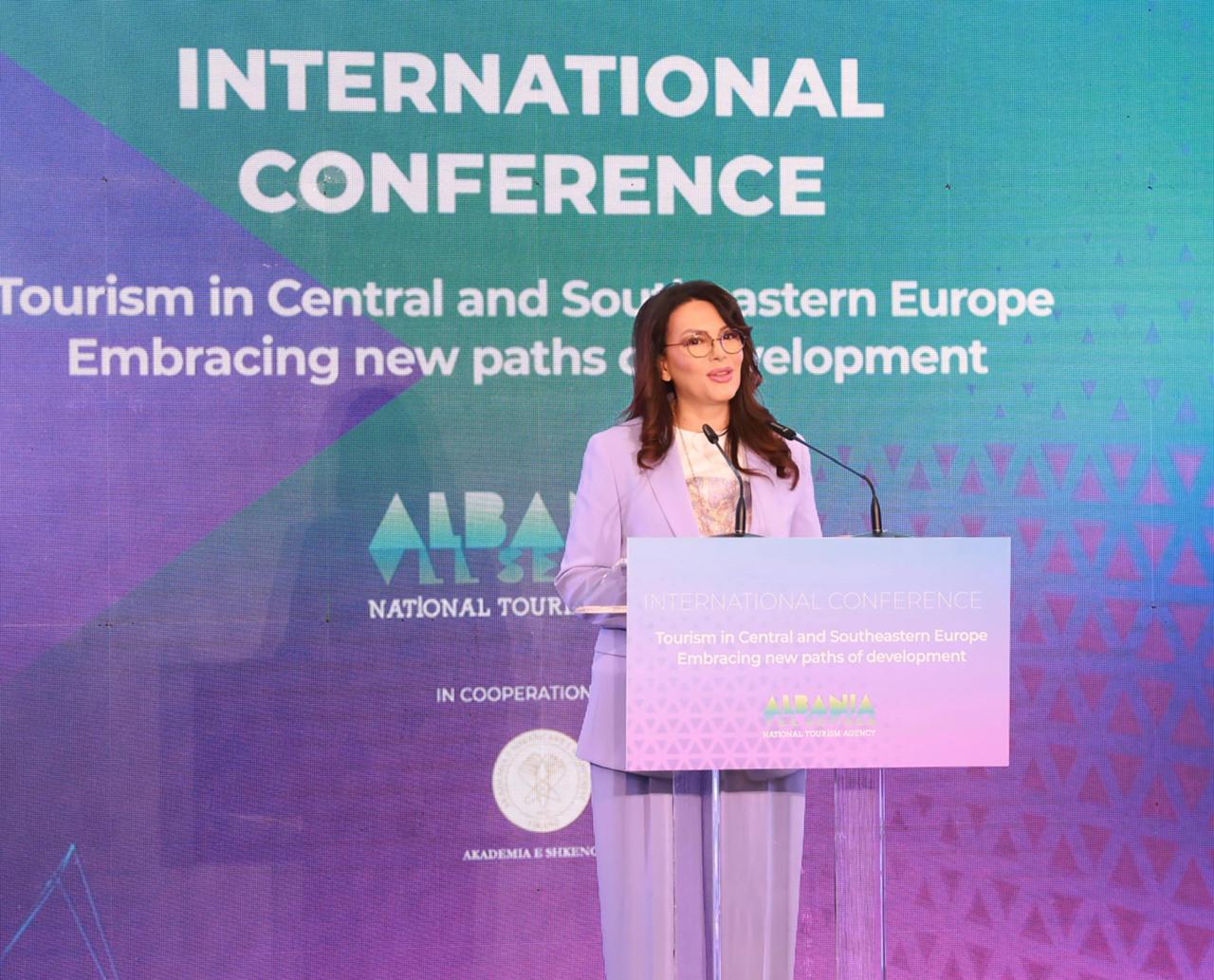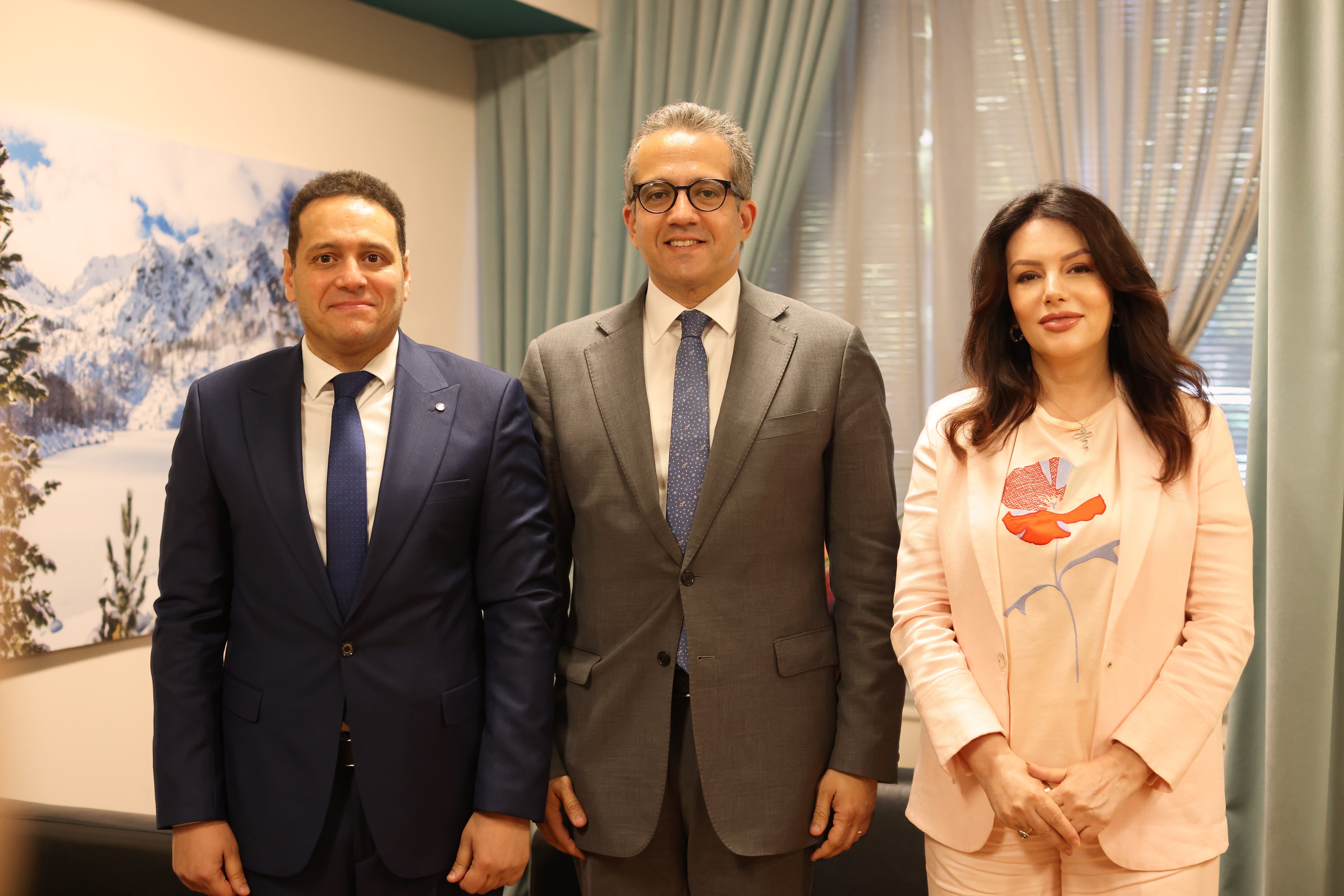The National Tourism Agency organized an international conference on September 27, 2024 in Tirana, Albania. The conference, held during Albania’s presidencies of the Central European Initiative (CEI) and the South-East European Cooperation Process (SEECP), focused on the development of tourism in Central and Southeastern Europe.
In her opening remarks, Zana Çela, Director General of the National Tourism Agency, emphasized the need to enhance regional tourism practices and promote sustainable growth through education and innovative tourism concepts. She underscored the Albanian government’s commitment to leveraging these presidencies to attract more tourists to the CEI and SEECP regions, beyond the traditional coastal and mountain offerings, by diversifying into cultural, agrotourism, medical, and other emerging tourism sectors.
Çela noted that realizing tourism’s full potential requires transforming the entire value chain, not just within the tourism industry, but across other economic sectors linked to it. This comprehensive approach, she argued, is essential for ensuring the long-term, sustainable growth of tourism in the region.
To promote our destinations more effectively, we need to be innovative and adopt new approaches. Simply having a clear vision is not enough; we must change many of our practices and strengthen our operational capacities to introduce new methods. More resources, trained staff, and expanded capabilities are required to create greater impact in the tourism field.
This conference and its three specialized panel discussions provide an opportunity to generate ideas and proposals on how we can transform our CEI and Es.I.I.Si.Pi region into a unified, attractive destination through coordinated, complementary offerings.
This would further stimulate tourist interest by showcasing the harmonized values and convenience of a comprehensive regional tourism package. But realizing this vision requires not only cooperation among the region’s government institutions but also a joint public-private and community commitment to make it a reality.
Organized into three discussion panels, the “Tourism in Central and Southeastern Europe: New Development Paths” conference brought examples of challenges and good practices, facilitating the exchange of experiences among representatives of the regional tourism sector.
Panel I
Effective tourism promotion requires creativity and innovation to attract the attention of potential tourists in an increasingly competitive market. We can look for new ways and means to promote tourism, such as:
– Digital marketing campaigns. We can use online advertising through social media platforms, Google ads, and influencer partnerships to reach specific demographic groups. Creating content that showcases the unique features of regional destinations will attract potential tourists.
– Virtual reality experiences. We can create virtual experiences that allow potential tourists to explore tourist destinations before visiting them. We can also create engaging social media that encourages users to share their travel experiences with the public and introduce destinations to their networks. This can help others imagine their future experience, and make informed travel decisions.
– Create interactive content. Promote interactive destination profiles that can engage the public to discover travel recommendations tailored to their interests, such as culinary, adventure sports or interests in historical sites.
– Self-generated content. Encourage travelers to share their experiences and emotions through photos and video reels on social media. Promote and incentivize this way of traveling with authentic content created by tourists themselves and shared by them on social networks.
– Influencer marketing. Collaborate with travel influencers or bloggers who resonate with our target audience to promote our destinations and visitor experiences.
Their recommendations can reach a large audience and inspire more people to travel.
– Creative partnerships. Partner with local businesses, hotels, restaurants, and tourism sites to create packages that offer travelers a more complete experience. Joint promotions can expand your audience reach and provide more value to tourists.
– Storytelling and content marketing. Create emotional stories about the history, culture, and hidden gems of the destination. Blogs, podcasts, and videos can share these stories and create a deeper emotional connection with future visitors.
– Mobile apps. Develop user-friendly apps that provide travel information, cultural destinations, and sites, cultural and sporting events, local itineraries and tips, offline maps, and booking options to enhance the traveler experience.
– Local engagement programs. Find ways to encourage residents to share what makes their destination special. Encouraging locals to engage with tourists can create a more personalized experience.
By combining these innovative promotional strategies, destinations can increase visibility and engage potential visitors. Adapting to current trends and preferences in the travel market will ensure that promotional efforts remain effective and resonate with the target audience.
Panel II
Tourism education is key to improving services in the tourism industry. By training individuals with the necessary skills and knowledge, tourism education can contribute to better service quality and sustainable tourism. Where can we focus during our discussions in this panel on tourism education:
– Skills development. Educational programs can teach essential skills, such as customer service, communication, management, enabling professionals to effectively manage different situations.
– Cultural awareness. Tourism education increases the value of local culture, traditions and customs, increasing visitor satisfaction.
– Knowledge of the destination, including its history, makes tourist destinations more attractive.
– Management training. Training programs should target young managers in the tourism sector, enabling them to make important decisions about the services they provide.
– Standards and service. Education can help staff understand industry standards and the importance of quality service, leading to a more satisfying tourism experience.
– Networking opportunities. Educational and professional programs often facilitate connections between students and industry professionals, strengthening their collaboration and knowledge exchange in service delivery.
By investing in tourism education, we will improve the skills of current and future professionals, increasing the quality of service.
Panel III
Building a tourism industry beyond classic tourism requires innovation in tourism in order to create new unique, attractive and sustainable experiences. Classic tourism typically refers to traditional forms such as sightseeing, beach holidays and hotel stays. But let’s discuss in the panel what are the strategies to expand the tourism industry beyond its traditional models:
– Experiential tourism. Let’s explore the experiences of that part of tourists who can interact with local culture and communities, such as culinary experiences or participation in traditional festivals and environmental events.
– More adventure tourism and eco-tourism. Let’s discuss how we can promote nature travel and environmental conservation, how we can have more hiking, cycling, rafting, kayaking, skiing, golf, exploring wildlife, and other adventure activities, while enjoying natural beauty.
– Cultural tourism. We talk about cultural heritage, arts, music, history and local traditions, but we need to expand this dimension by directing it to concrete interests, such as traditional local festivals, multi-art festivals, literature, film, music or visual arts
– Health and Wellness Tourism. How can we develop offers related to our physical and mental well-being, such as dental care, esthetic care, spa experiences, yoga sessions and other local wellness experiences? This sector should grow because people want to combine their holidays, they need to regenerate, rest and relax during their travels.
– Agritourism. Strengthen links with local farms and food production by offering farm stays, food tours, tasting events, homestays, local guided tours, etc. This can support local agriculture and inform tourists about where their food comes from. Where possible, offer tourists skills classes for those looking to learn something new in areas such as cooking, crafts or language.
By moving beyond classic tourism and exploring these alternative approaches, the tourism industry can attract a wider range of travelers, promote sustainable practices and create more enriching experiences that benefit visitors and host communities.

 Shqip
Shqip

